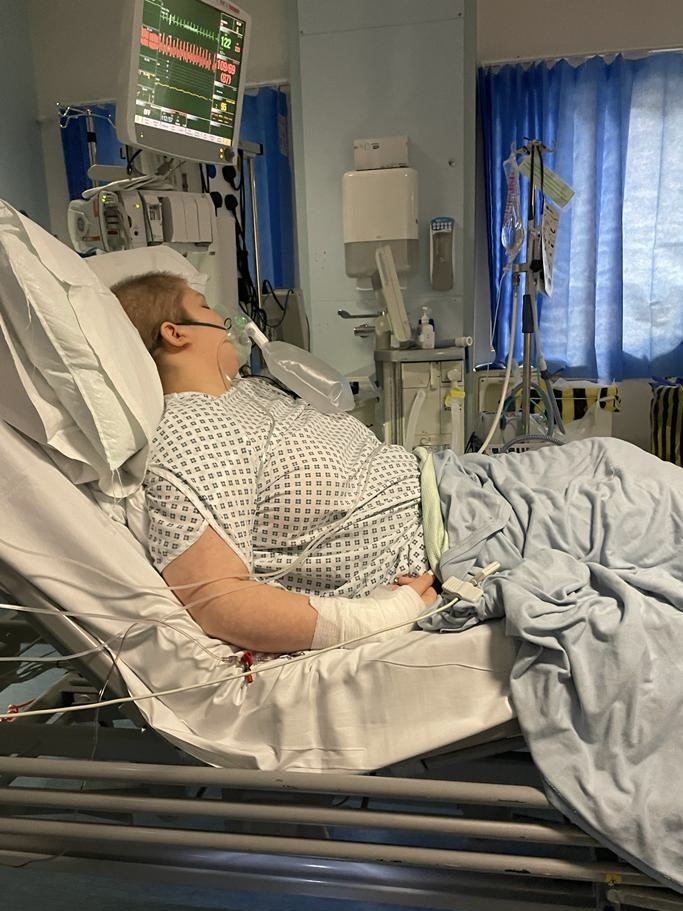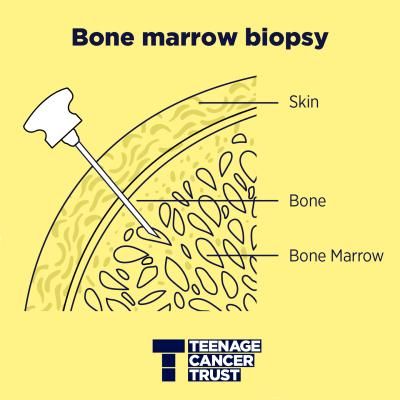What is aplastic anaemia?
Aplastic anaemia is a blood disorder where your bone marrow stops producing enough red blood cells.
It’s important to note that while aplastic anaemia is not a type of cancer, people might have some of the same treatments as someone with cancer.
- There are different types of blood cells in your body that have different important roles
- Blood cells are made by your bone marrow
- If your bone marrow stops working properly, you might not have enough blood cells to do these jobs properly. This can cause problems and make you unwell
What is aplastic anaemia?
Aplastic anaemia is a blood disorder where your bone marrow doesn’t work properly and stops producing enough red blood cells. Sometimes it’s also known as ‘bone marrow failure’.
Bone marrow is the soft, spongy stuff in your bones. Your blood cells are made in your bone marrow. If your bone marrow doesn’t make enough blood cells this can cause problems and make you unwell. Different types of blood cells have different jobs, and if there are not as many of these cells as normal this can cause different problems depending on which blood cell types are most affected.
When it’s not working properly it doesn’t produce red and white blood cells or platelets in the way it needs to.
Aplastic anaemia can be mild, moderate or severe. People with mild aplastic anaemia might only need to be regularly monitored to check their blood is doing its job well enough. Those with severe or very severe aplastic anaemia usually require urgent treatment.
What do different types of blood cells do?
Red blood cells: The main job of red blood cells is to carry oxygen from the lungs, around the body. They also carry carbon dioxide back to our lungs to be exhaled (breathed out).
White blood cells: The main purpose of these cells is to fight off infection in the body.
Platelets: These cells help fix injuries. They go to the site of an injury and form a clot which stops bleeding. So, for example, if you have a cut these are the cells that help form a scab to heal the cut and stop the bleeding.
What are the symptoms of aplastic anaemia?
Similar to some cancer diagnoses, symptoms for aplastic anaemia might show up differently for different people. The most common symptoms are:
- Fatigue – this means feeling exhausted and having no energy, it can be severe and make day-to-day life very difficult. It’s not the same as feeling tired. Tiredness doesn’t usually last very long and you feel better after you sleep or rest. Fatigue is more persistent and ongoing
- Infections - because white blood cells fight infection, if there aren’t enough of them then you might be more likely to get infections and it might be harder to get rid of them. You might find that you’re catching more infections, especially bacterial infections (e.g. chest infections) and fungal infections (e.g. thrush)
- Shortness of breath – this is usually caused by low numbers of red blood cells (anaemia)
- Bruising – if you have low platelet levels then you’re likely to bruise more easily. You might also find that you bleed easily from your gums, and have nose bleeds more often
- Headaches – this is also an effect of having a lower red blood cell count that usual
- Petechial rash – this is a rash that doesn’t fade when you put pressure on it. A common way to test this easily at home is to use a clear glass and press it against the area of skin with the rash. If you can still see the rash under the glass it’s a petechial rash
- Feeling faint and dizzy – you might feel light-headed or off balance
Some people might also experience chest pains, but this is a less common symptom.
How is aplastic anaemia diagnosed?
Aplastic anaemia can be difficult to diagnose because it is extremely rare, and a lot of the symptoms might be initially suspected to be other medical conditions – like leukaemia.
Blood tests can be used to check cell counts but the only way to definitely diagnose aplastic anaemia is to take a sample of bone marrow and look at it under a microscope.
This will be done with a bone marrow biopsy. A doctor or nurse will use a needle to remove a sample of bone marrow from somewhere like your hip bone.
What is the treatment for aplastic anaemia?
There are two different types of treatment for aplastic anaemia:
- Supportive care: this helps manage your symptoms
- Definitive treatment: this helps your bone marrow start working again
The type of treatment you have depends on how severe your aplastic anaemia is, your age and general health, and whether there is a bone marrow donor available.
Supportive care might include blood transfusions to correct your red blood cell levels, taking antibiotics and anti-fungal drugs to reduce risk of infection (and treat any infections that do appear) and platelet transfusions to increase your platelet count.
Definitive treatment can include taking medication to control your immune system and stop it attacking your stem cells, this is called immunosuppression. You might also have a bone marrow transplant to replace your bone marrow. For this to work the stem cells in your bone marrow have to match those of the person who is donating their bone marrow. Your care team will tell you more about how this works and who might be able to donate.
You can find out more about the different types of treatment on the Aplastic Anaemia Trust website.
Is aplastic anaemia a type of cancer?
No, aplastic anaemia is not a type of cancer. However, some of the treatments for aplastic anaemia are the same as those used to treat cancer. This is why young people with aplastic anaemia may also get support from Teenage Cancer Trust specialist nurses and Youth Support Coordinators.
Is aplastic anaemia the same as anaemia?
No, even though they have similar names, they’re not the same.
If you have anaemia it means you have low red blood cell numbers in your blood. This is usually treated by either taking iron tablets or eating food that has lots of iron in it.
Aplastic anaemia is a rare and serious blood disorder where your bone marrow doesn’t work properly.
How do you get aplastic anaemia?
There are two main types of aplastic anaemia:
- Acquired aplastic anaemia
- Inherited bone marrow failure
Acquired aplastic anaemia is the most common type. Usually there’s no obvious cause as to why someone has got this.
How many people get aplastic anaemia?
The Aplastic Anaemia Trust estimates that between 120 – 150 people are diagnosed with aplastic anaemia in the UK each year.
Just two in a million people will be diagnosed with aplastic anaemia. This makes it an ultra rare condition. People diagnosed with aplastic anaemia will often never meet another person with the condition.
You can find out more about the support offered by the Aplastic Anaemia Trust for young people at the bottom of this page.
What support is available to me if I have aplastic anaemia?
Aplastic Anaemia Trust
The Aplastic Anaemia Trust is here to support anyone who has been diagnosed with aplastic anaemia in the UK, or who is supporting a loved one with the condition.
Aplastic anaemia is rare, but not to us. We can help you to:
- Find detailed information and advice resources for young people
- Got questions about aplastic anaemia or need someone to talk to? Get in touch via our support line
- Read blogs and watch videos by other young people who have aplastic anaemia
- Find upcoming events, online and in person, where you can connect with other people affected by aplastic anaemia
Teenage Cancer Trust
If you’re between 13-24 years old with aplastic anaemia and you have a stem cell transplant you might be able to access support from Teenage Cancer Trust frontline staff, depending on where you’re being treated. If you’d like to know whether this is an option for you, you should speak to your care team.
Tips
Young people with aplastic anaemia have kindly shared their tips for other young people:
- I would advise other young people to learn about the disease through resources from charities
- It’s a marathon not a sprint. It might get worse before it gets better. But it will get better. It’s all about the small wins.
- It can help to share your experience of aplastic anaemia and its treatment with someone you trust who can then support you in social situations when you don’t feel like talking about it yourself
- Get involved with the Aplastic Anaemia Trust - they can offer some very helpful support!
- There are other people who live with and have recovered from the condition – it’s easy to focus on how rare it is but it’s important to remember that there are also people who want to and will support and help you.
- When you’re talking about your diagnosis I’d advise talking about it as ‘bone marrow failure’ because is so often associated with iron deficiency and it’s not the same
- Connecting and speaking with others who have this rare condition can be very helpful and The Aplastic Anaemia Trust can help with that
- The Aplastic Anaemia Trust Facebook group has always been a great resource for connecting, getting help and staying informed
This information was created in 2024. It will be reviewed in 2027.

PIF TICK accredited information
The Patient Information Forum is the UK membership organisation and network for people working in health information and support. The PIF TICK is the UK-wide Quality Mark for Health Information.



